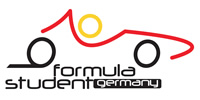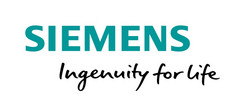For the 2nd year - at FSG19, Siemens Software is sponsoring the “FSG Siemens Digital Twin Engineering Excellence Award”, a 7.500 EUR award to recognize 3 teams which have used the most professional, innovative and thoughtful ‘Digital Twin’ engineering practices. ‘Digital Twin’ is the concept of a digital, simulationoriented representation of the targeted product from the earliest concept stages of the design cycle all the way through to detailed design and on to fabrication, testing, operation and maintenance with both feed-forward and feed-back between your comprehensive virtual model and your fabricated, tested and raced - Formula Student racecar.
You can learn more about Digital Twin concept at: fsg.one/digital-twin-1.
3.500 EUR = 1st Place
2.500 EUR = 2nd Place
1.500 EUR = 3rd Place
We’d like to see that your team has relied on digital design and simulation models to guide the full product lifecycle from its early ideas to meet your racecar goals and requirements, the functional/performance target-setting process, concept studies, design and verification by simulation and virtual testing and on into digitally-guided fabrication, testing, operation and maintenance. In addition, ongoing and efficient change, issue and problem management processes are valuable to show.
Modern vehicles have rapidly increasing amounts of power-hungry on-board electronics, electrical and software complexity, as well as demands for aero efficiency for energy conservation. So we are also wanting to hear about topics such as the digital twin of the electronic and electrical distribution system and its associated wire-harness design, as well as the cooling and aero package design and analysis with CFD.
General Conditions
- FSG19 teams can apply for the Digital Twin award by submitting an application (max. 6 pages including figures) by July 22nd, 2019, 23:59 CEST (MyTeam => Competitions => Deadlines). You may include appendices with additional supportive information- but tell your core ‘Digital Twin’ story, in the 6 pages and reference where the appendices apply. We will also be reviewing your FSG Static Design document
- Be sure to address the areas of the 7 rating categories listed below.
- Five finalists will be selected by the Siemens judging panel by Wednesday afternoon. The head judge will visit each team by Wednesday afternoon to arrange a time slot on Thursday to meet in your pit for a 10-15 minute informal presentation and Q&A. Presenters may include up to 6 people.
- The award-winning teams will be announced during the FSG special-awards ceremony on Saturday night.
- For questions about the Digital Twin Award - email leigh.anderson(at)siemens.com
- Use of Siemens software tools is highly encouraged but not required.
For no-cost grants of Siemens PLM software see: fsg.one/siemens-software-1- NX for 3DCAD, CAM and 3D-printing,
- Fibersim for big cost-savings with carbon composite manufacturability-simulation,
- STAR-CCM+ for 3D-CFD,
- NX-NASTRAN for FE,
- PreScan for Driverless track environment simulation,
- Amesim for mechatronics system simulation,
- FloEFD for 3D-CFD
- VeSys/Capital for wire-harness design,
- Volcano for CAN design/simulation,
- Motorsolve for custom electric motor design,
- PADS Professional for circuit board design
Digital Twin Thinking,
Digital Twin Engineering Process Excellence
- Below are examples to help you recognize the type of engineering thoughtfulness and process we’re looking to reward. The more compelling the better.
- Explain the overall strategy/architecture process starting with the first concept of your car and simulations, other digital models or calculations that guided the architecture and key attributes of your car.
- Show the maturity and completeness of your “Digital Twin” virtual design across all domains: such as mechanical, electrical, software, documentation for judges and team collaboration, fabrication, and racecar operations.
- Explain how multi-physics simulations (including but not limited to CFD, FEM, MBS, Electrical, System simulation) were used to influence the design of your aero package, chassis or other aspects of the car. Did it drive trade-offs or innovations in other parts of your ‘virtual car’?
- Did your CFD simulations influence other disciplines such as electrical system, sensors, telemetry, actuators, or the drivetrain? Did you come up with some innovations using CFD simulations? Or what major insights did you discover when analysing cooling your engine or accumulator?
- Explain the digital design of your car’s electrical system and wire-harness design. Did you innovate to modify/augment the car’s performance and/or endurance via electronics and wiring, especially relating to light-weighting, or innovative use of sensors and/or actuators? Did you virtually integrate your 3D-CAD chassis model with wire-harness layout to calculate correct 3D wiring lengths? We are looking for well-developed electrical system & wiring harness designs including use of schematics, design-checking, electrical simulation, 3D CAD virtual integration, and a formal parts library. Did you use a professional software tool meant for wiring - or just Excel and Visio for your harness design?
- Show your team’s ability to accurately predict your race car’s performance from simulation models, such as vehicle dynamics or lap-times. Did you use special sensors for measuring the car during race or testing conditions? How did the digital models and physical measurements evolve as you learned? Sensors? Telemetry? Feed-forward examples? Feed-back examples?
- Explain how your car’s electro-mechanical design includes thorough and accurate digital models and simulation, including embedded software if used.
- Have you made parts using 3D-printing/additive manufacturing (AM), or CAM to drive CNC machines, or other digitally-driven production such as composites part design (such as using carbon composite design software to drive a CNC ply-cutter?
- Have you discovered performance or other problems that showed up in the physical car or physical parts, that you diagnosed the root-cause and solved back in the digital model of the car or parts, then validated the fix in the physical car? Or updated the digital model from physical data, (feed-back), that then guided improvement in the physical car (feedforward)?
- How did you keep track of your requirements and the data created along your design process? Did you use a product data management system (PDM), and/or requirements management software? What effort did you take to make sure every team member works on the most current status of any available data/models/documents? PDM software helps you manage product data and process-related information in a unified database system. This information includes design data, models, parts information, manufacturing instructions, requirements, notes and documents. A PDM system provides solutions for secure data management, process enablement, and configuration/version management.
The 7 categories that are judged and rated numerically:
- Electrical Design & Simulation plus its connections to other disciplines and product/data management. Level of simulation automation. Use of professional software for design and simulation of electrical system design, electrical schematics, and wire-harness. Also Embedded Software sophistication and integration of in-vehicle software into electro-mechanical simulations.
- Mechanical Design & Simulation plus its connections to other disciplines and product/data management. Level of simulation automation. Integration of mechanical with electrical and other disciplines.
- Product/Data management systems and software in place and used deeply and broadly.
- Professional level of Digital Twin process and the Digital Twin application, as well as the Design Report and the professional conduct of the Meeting with judges if selected as a top-5 candidate.
- Innovation in Digital Twin Process/methods, and/or innovation of the car/parts/performance derived using Digital Twin processes.
- Depth and breadth of Feed-forward and Feedback/continuous-maintenance of the simulations/models. This is the essence of Digital Twin engineering excellence.
- Knowledge and personnel management/training/infrastructure - to keep Digital Twin engineering process going and improving despite annual turnover in the student teams environment.
Eligibility
The pre-submission method application is open to Electric, Combustion and Driverless teams participating at Formula Student Germany, 2019. We are looking forward to meet you and your insightful Digital Twin!



